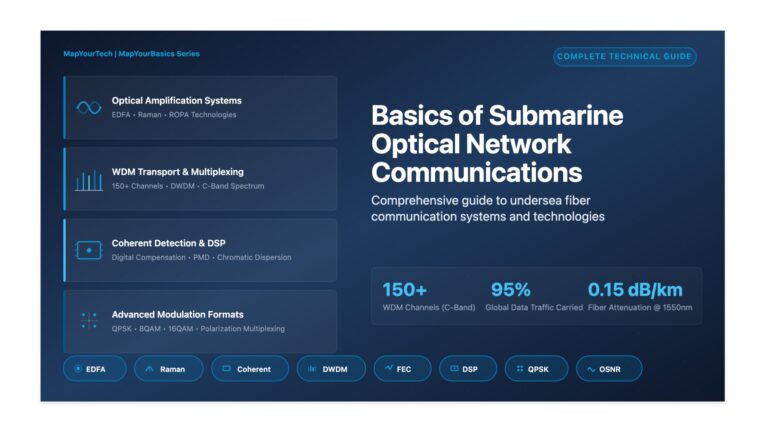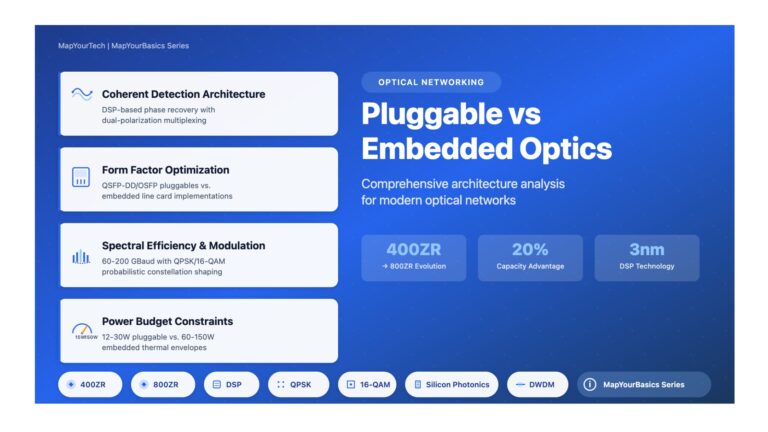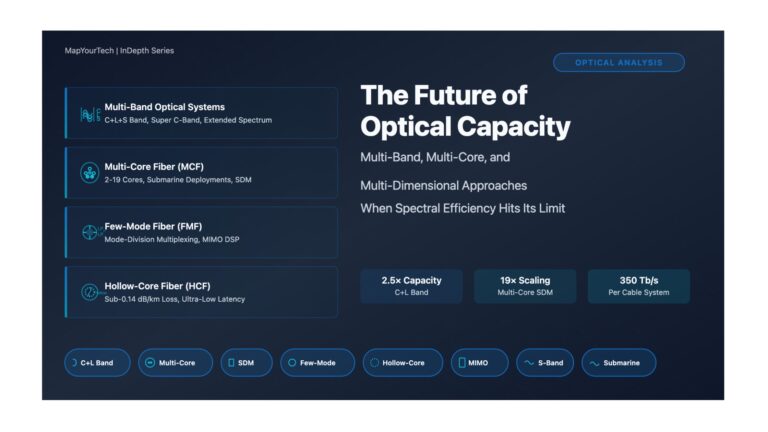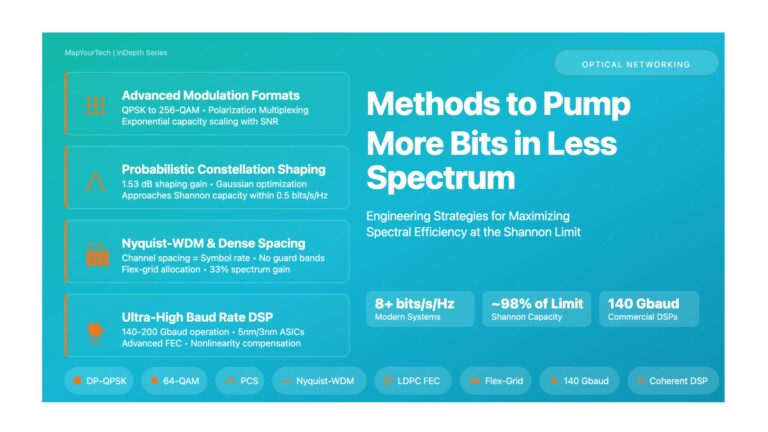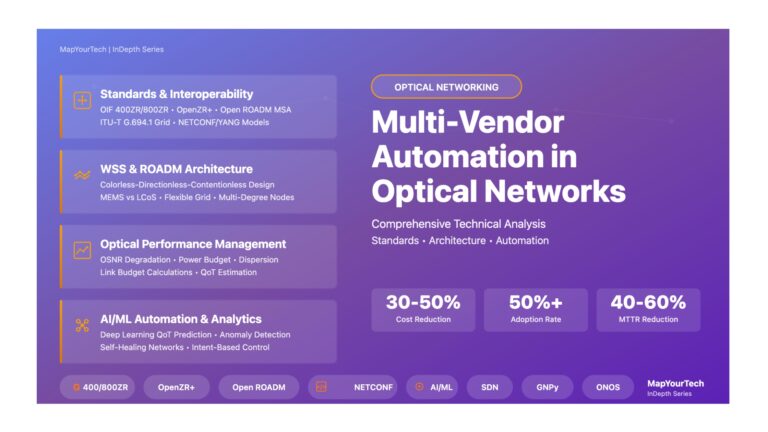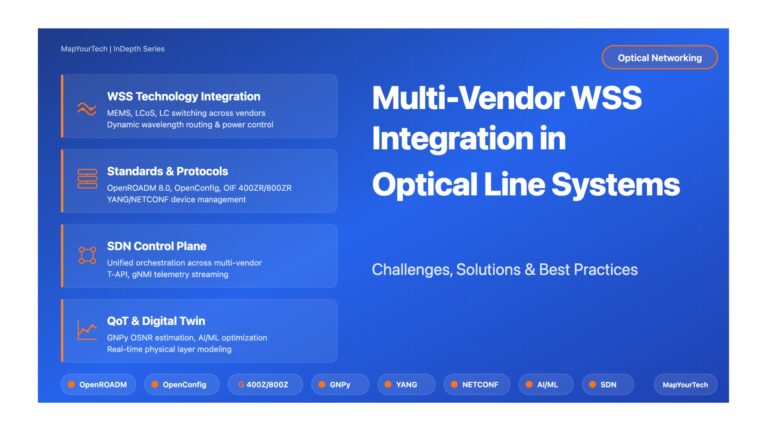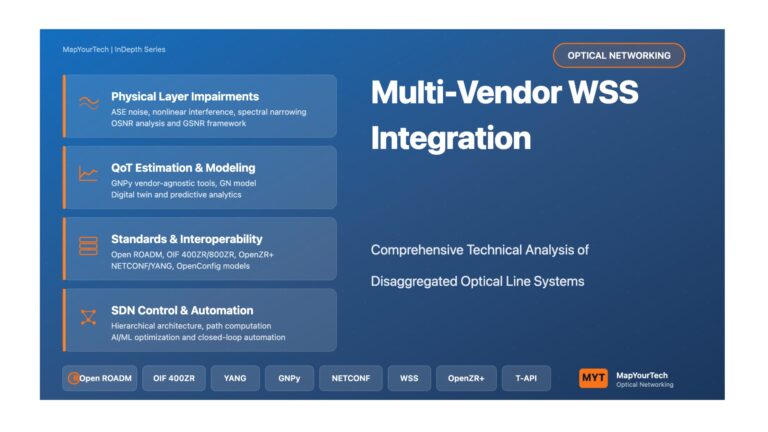Technical
Showing 51 - 60 of 573 results
Basics of Submarine Optical Network Communications – MapYourBasics Basics of Submarine Optical Network Communications Comprehensive Guide to Undersea Fiber Communication...
-
Free
-
November 29, 2025
Complete Guide: Shannon Capacity to OSNR and GOSNR – Part 1 From Shannon Capacity to OSNR and GOSNR: A Complete...
-
Free
-
November 20, 2025
Pluggable vs Embedded Optics: Which is Right for Your Network? | MapYourTech Pluggable vs Embedded Optics: Which is Right for...
-
Free
-
November 20, 2025
The Future of Optical Capacity: Multi-Band, Multi-Core, and Multi-Dimensional Approaches – Part 1 The Future of Optical Capacity: Multi-Band, Multi-Core,...
-
Free
-
November 20, 2025
Methods to Pump More Bits in Less Spectrum in Optical Fiber Methods to Pump More Bits in Less Spectrum in...
-
Free
-
November 19, 2025
Multi-Vendor ROADM Interoperability – Part 1: Introduction & Architecture Multi-Vendor ROADM Interoperability in Optical Transport Networks Introduction The optical networking...
-
Free
-
November 16, 2025
Understanding OpenROADM: Architecture and Implementation Understanding OpenROADM: Revolutionizing Optical Network Architecture Introduction OpenROADM (Open Reconfigurable Optical Add/Drop Multiplexer) represents a...
-
Free
-
November 15, 2025
Multi-Vendor Integration in Optical Networks: A Comprehensive Technical Analysis Multi-Vendor Automation in Optical Networks: A Comprehensive Technical Analysis Introduction The...
-
Free
-
November 15, 2025
Multi-Vendor WSS Integration in Optical Line Systems: Comprehensive Technical Guide Multi-Vendor WSS Integration in Optical Line Systems Comprehensive Technical Guide:...
-
Free
-
November 15, 2025
Multi-Vendor WSS Integration in Optical Line Systems: Comprehensive Technical Analysis Multi-Vendor WSS Integration in Optical Line Systems Comprehensive Technical Analysis...
-
Free
-
November 14, 2025
Explore Articles
Filter Articles
ResetExplore Courses
Tags
automation
ber
Chromatic Dispersion
coherent optical transmission
Data transmission
DWDM
edfa
EDFAs
Erbium-Doped Fiber Amplifiers
fec
Fiber optics
Fiber optic technology
Forward Error Correction
Latency
modulation
network automation
network management
Network performance
noise figure
optical
optical amplifiers
optical automation
Optical communication
Optical fiber
Optical network
optical network automation
optical networking
Optical networks
Optical performance
Optical signal-to-noise ratio
Optical transport network
OSNR
OTN
Q-factor
Raman Amplifier
SDH
Signal amplification
Signal integrity
Signal quality
Slider
submarine
submarine communication
submarine optical networking
Telecommunications
Ticker

